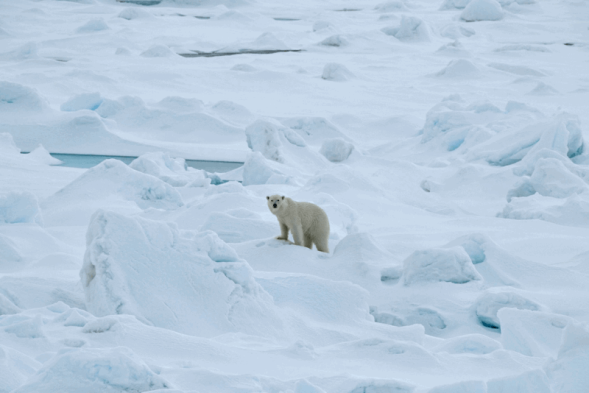SHOCKINGLY Thick First Year Ice Between Barents Sea And The North Pole In Mid-July
Posted: July 29, 2019 Filed under: Alarmism Debunked, Alarmism uncovered, Arctic, Climate Change, Dud predictions, Fact Check, Polar Bears | Tags: Alarmism debunked, Alarmism Exposed, Arctic Sea Ice, Climate Change, Climatism, DMI, Dud Predictions, Fact Check, Global Warming, Grand Solar Minimum, North Pole, Polar Bears, Sea Ice, Susan Crockford 2 Comments
DMI Modelled ice thickness | DMI
• “Arctic summers ice-free by 2013” (BBC 2007)
• “Could all Arctic ice be gone by 2012?” (AP 2007)
• “Arctic Sea Ice Gone in Summer Within Five Years?” (National Geographic 2007)
• “Imagine yourself in a world five years from now, where there is no more ice over the Arctic” – Tim Flannery (2008)
• “North Pole could be ice-free in 2008” – Mark Serreze (New Scientist 2008)
• “Gore: Polar ice cap may disappear by summer 2014” (USA Today 2009)
• “Arctic expert predicts final collapse of sea ice within 4 years” (Guardian 2012)
• “Say Goodbye to Arctic Summer Ice” (Live Science 2013)
• “Ice-free Arctic in two years heralds methane catastrophe – scientist” (The Guardian 2013)
• “Why Arctic sea ice will vanish in 2013” (Sierra Club 2013)
• “Next year or the year after, the Arctic will be free of ice’” – Peter Wadhams (The Guardian 2016)(QUOTE references : CLIMATE DUD-PREDICTIONS : ‘Ice-Free’ Arctic Prophesies By The ‘97% Consensus’ And Compliant Mainstream Media | Climatism)
*
DIRE predictions of an “ice-free” Arctic have remained popular on the climate change, fear-mongering circuit for many years now.
BUT, how ‘bad’ really are Arctic sea-ice conditions, in mid-summer, circa 2019?
ACCORDING to this latest piece of anecdotal (real-world) evidence, Arctic “Death Spiral” enthusiasts would be understandably disappointed!
“…what we saw was indeed really impressive sea ice. In fact, the sea ice we encountered was thick enough that reaching our destination—the geographic North Pole—took roughly 1.5 days longer than we’d expected.”
READ it all…
polarbearscience
In late June, one of the most powerful icebreakers in the world encountered such extraordinarily thick ice on-route to the North Pole (with a polar bear specialist and deep-pocketed, Attenborough-class tourists onboard) that it took a day and a half longer than expected to get there. A few weeks later, in mid-July, a Norwegian icebreaker also bound for the North Pole (with scientific researchers on board) was forced to turn back north of Svalbard when it unexpectedly encountered impenetrable pack ice.
 A polar bear on hummocked sea ice in Franz Josef Land. Photo by Michael Hambrey, date not specified but estimated based on tour dates to be 22 or 23 June 2019.
A polar bear on hummocked sea ice in Franz Josef Land. Photo by Michael Hambrey, date not specified but estimated based on tour dates to be 22 or 23 June 2019.
Apparently, the ice charts the Norwegian captain consulted showed ‘first year ice‘ – ice that formed the previous fall, defined as less than 2 m thick (6.6 ft) – which is often much broken…
View original post 1,462 more words


[…] SHOCKINGLY Thick First Year Ice Between Barents Sea And The North Pole In Mid-July — Climatism […]
LikeLike
Largest fraud ever perpetrated on the world, yet airports like YVR continue to billedmulti billion$ expansion at SEA Leval
LikeLike